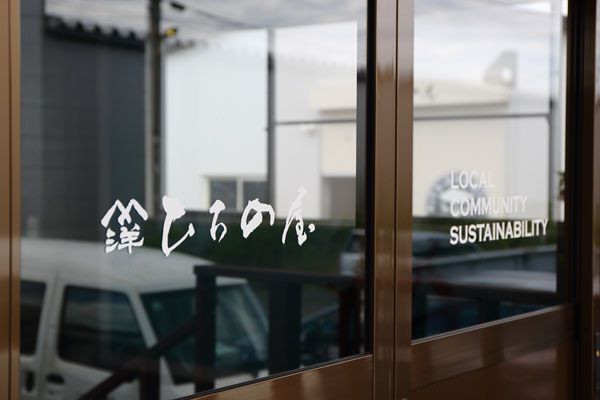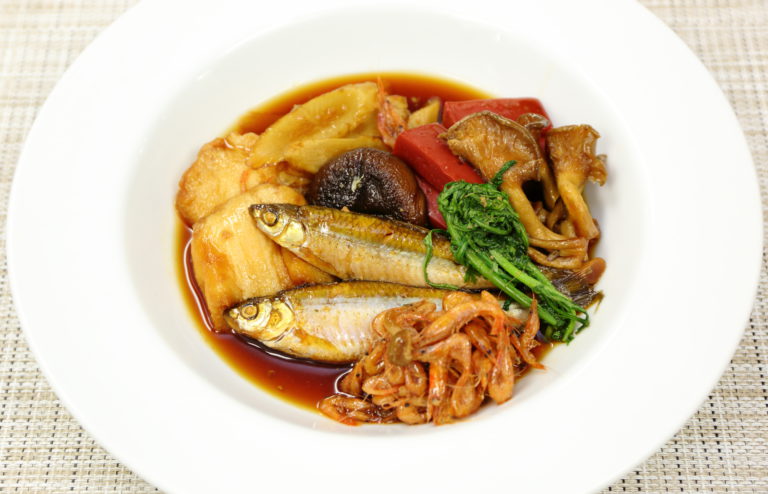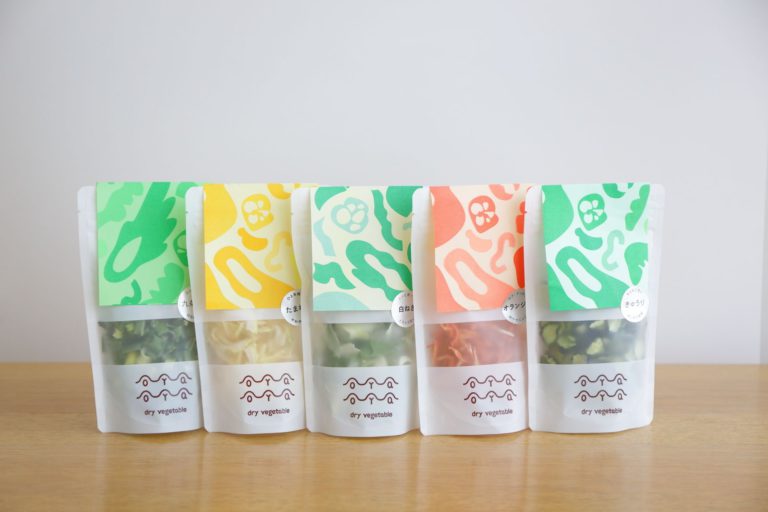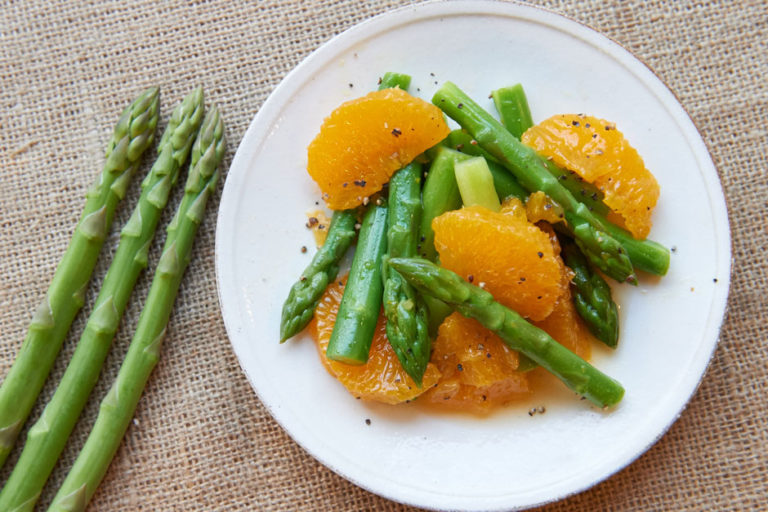Premium Sea Urchins Nurtured in the Sea

The top-quality sea urchins of Hironocho are the result of the unique topography and natural characteristics of the area combined with many years of traditional practice. The Hironocho brand is today famed throughout the world.
Hironocho, the town where history is inextricably linked to the ocean
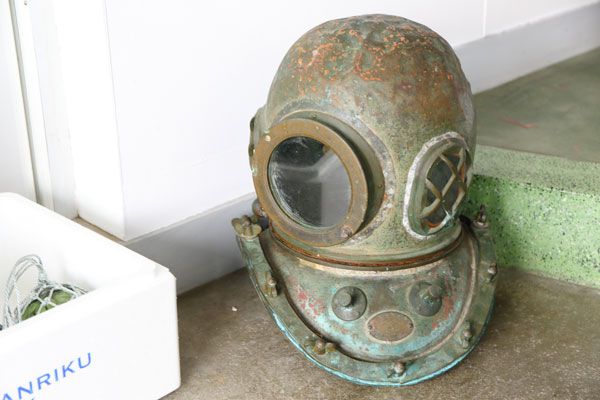
For over a century, the clear blue waters around Hironocho have supported a traditional diving technique known as nanbu-moguri, which involves the use of a special diving helmet.
As an illustration of how the history of Hironocho is inextricably linked to the oceans and the fishing industry, the local high school at Taneichi offers a course called Ocean Development where one of the aims is to ensure the preservation of nanbu-moguri techniques by training up modern-day “nanbu divers.”
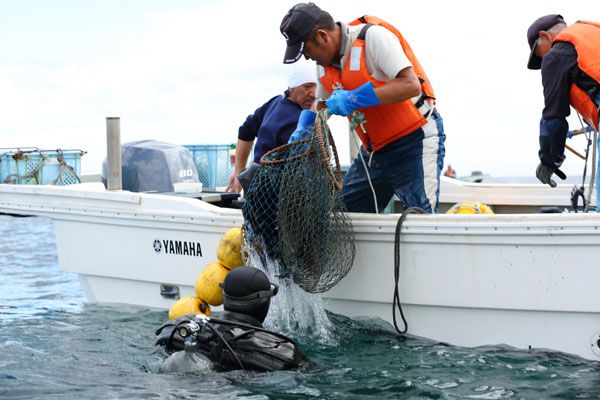
The sea urchin season at Hironocho goes for about four months prior to spawning, normally from May through August.
Divers take small boats to shallow regions at a depth of about five meters to search for sea urchins. At this depth, diving equipment is not required. Each one is carefully inspected for size and type, and only those that are fully matured are taken. It is this level of respect for the ocean environment that has allowed the local fishing industry to remain viable to this day.
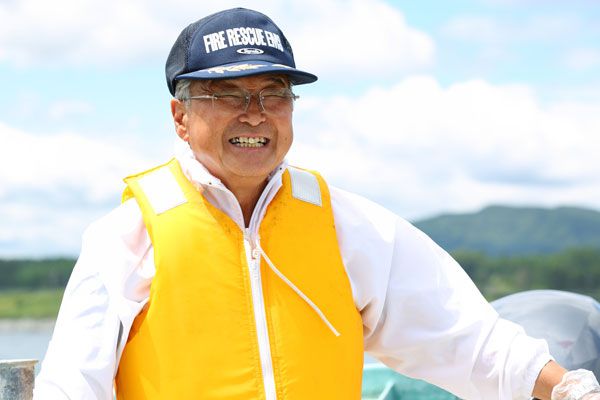
At the nearby fishing port of Kadonohama, we meet Fumio Omura, head of the Taneichi Fishing Cooperative. Omura, says that the combination of clear water and naturally occurring seaweed varieties such as wakame and kombu provide the ideal habitat for sea urchins at Hironocho. “That’s what gives them such great flavor,” he adds proudly.
The quality of a sea urchin is to a large extent determined by the food available to it during the growth phase.
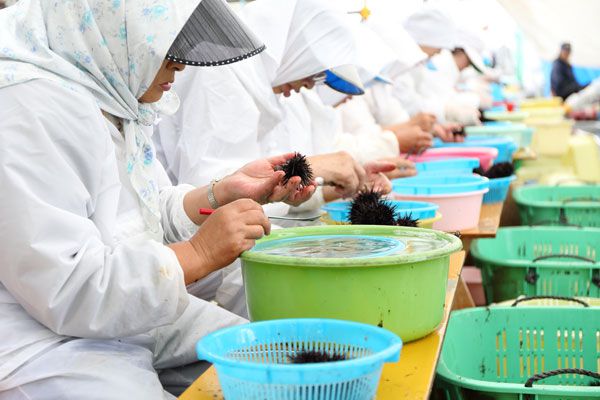
Sea urchins are officially omnivorous—they will eat just about anything. This means that the habitat, and in particular the available foods, has a significant impact on taste and flavor. In a natural setting where the environment is not strictly controlled, there can be considerable variation in flavor for this very reason. Sea urchins from Hironocho, however, are consistently rich in flavor, having grown up on an excellent diet of wakame and kombu seaweeds that carpet the ocean floor.
At Kadonohama, the work of prizing the Kita-murasaki sea urchins from their shells begins early in the morning.
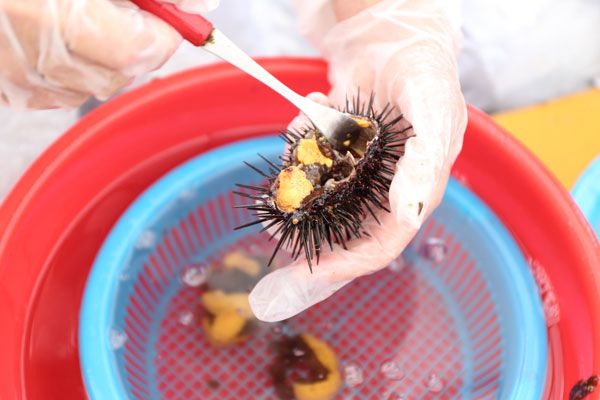
The workers split the shells from the opening and use tweezers to deftly remove the black internal organs along with any seaweed fragments. They have to work quickly but carefully to avoid harming the delicate flesh of the sea urchin. It is a painstaking and methodical process that requires a great deal of skill and patience.
“Hironocho sea urchins are the best in the world,” says Omura. “We’ve got world-class fishing grounds right here on our doorstep along with traditional techniques that we want to carry on into the future.”
Premium sea urchins fed on an exclusive diet of naturally occurring kombu seaweed
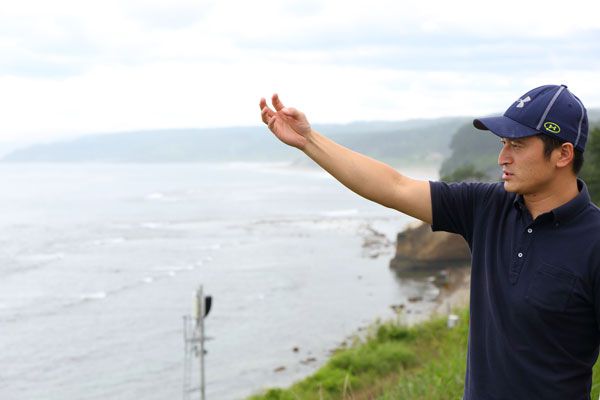
Another important part of the Hironocho success story is the commitment of the township over the last 45 years, through initiatives designed to improve the quality of sea urchins—in particular, by digging breeding trenches in the shallows to create a sea urchin farm, popularly known as uni bokujo.
Shungate spoke with Yukinori Shitautsubo, president of local seafood wholesaler Hironoya.
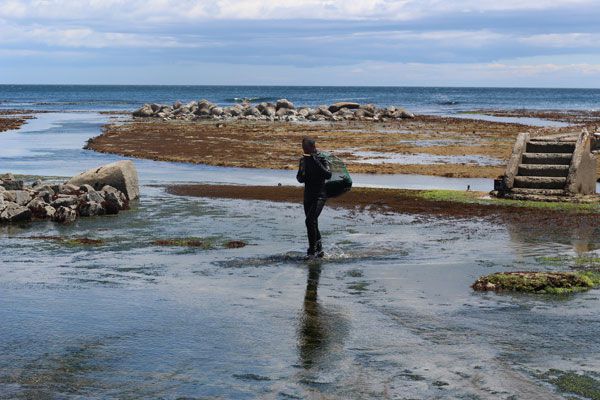
“Unlike other towns along the Sanriku coastline,” he explains, “Hironocho is exposed to fairly rough seas because we face directly out to the Pacific Ocean. Marine life is therefore more easily affected by the vagaries of the weather, and this can cause quality levels to vary. Many years ago the local people put their heads together to try and work out a way that we could improve the consistency of our harvests, and they hit upon the idea of digging trenches in these shallows. There was over ten kilometers of shallows formed from natural bedrock. They dug hundreds of trenches about three meters deep to create a lovely habitat for the sea urchins, and stocked them with naturally growing kombu. Even today, our uni bokujo is the largest sea urchin farming operation in the world.”
It takes about four and a half years for a sea urchin to reach the harvest size of around six centimeters.
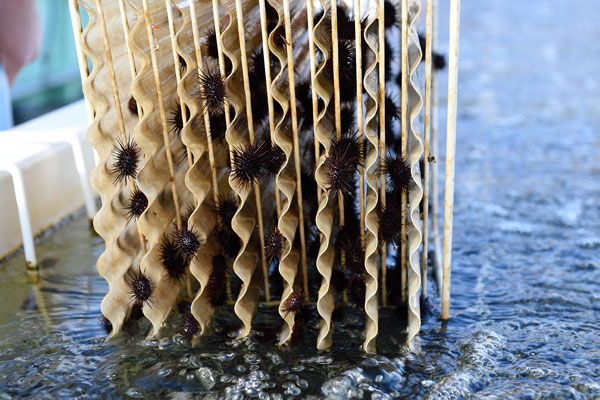
The first year in the life of a sea urchin is spent at an intensive farming facility close to the port.
The young sea urchins are then released into the open ocean and spend the next two years in a natural environment. At the end of this time they are relocated once more by divers to the uni bokujo trenches, where they grow to full size on a steady diet of delicious kombu seaweed.
After about four and a half years of careful nurturing, the plump and hardy sea urchins are finally ready for harvest.
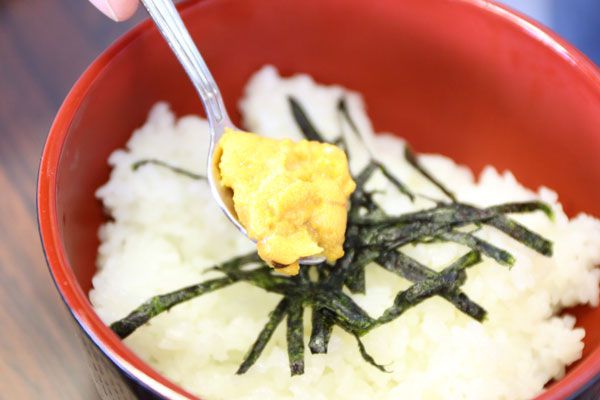
This unique “fish farming” approach, the result of countless years battling the forces of nature, now produces consistent harvests of premium quality sea urchins year after year.
Sea urchins grown in the uni bokujo trenches on a steady diet of natural kombu have a wonderfully full and rich flavor. It’s as if they’ve already been marinated in dashi broth! If you ever get the chance to venture north to Hironocho you simply must try a freshly shucked sea urchin, but to fully appreciate the flavor, you need to sample it first without any condiments at all — not even soy sauce. Of course, they also taste great together with wasabi and soy sauce on top of freshly steamed rice, in a dish known as nama uni don.
Putting northern Sanriku on the map
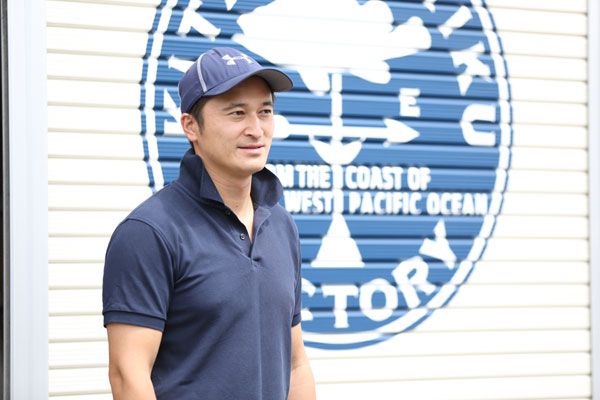
Shitautsubo is currently working on a global branding strategy to promote products from Hironocho and the northern Sanriku region to both domestic and global markets.
“The 2011 earthquake and tsunami caused considerable damage to the sea urchin farms at Hironocho,” he explains. “But we had a lot of support from many people, and we were able to get up and running again fairly quickly. Now we’ve got a new processing facility that gives us the chance to market our wonderful range of quality products to consumers all over Japan and even further afield to the global marketplace. We are looking to grow the local industry and provide good jobs that young people will want to take up in the future.”
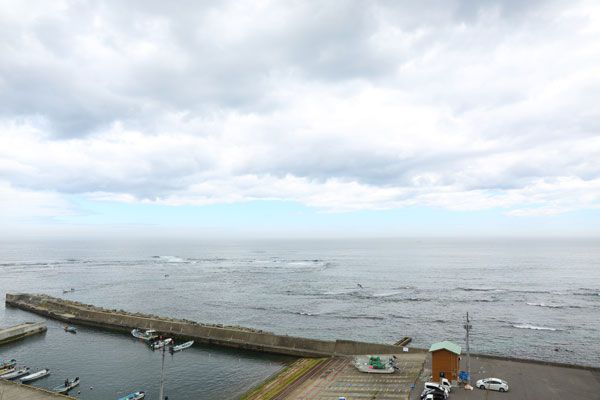
Hironocho presents a unique combination of stunning natural attributes, ancient traditional cultural techniques of the nanbu divers, a thriving processing industry and strong support from the local community. Each of these elements is vital to ensuring the future success of Hironocho, the town whose history is inextricably linked with the ocean.
Kita-murasaki sea urchins from Hironocho
Source:Yukinori Shitautsubo, president of Hironoya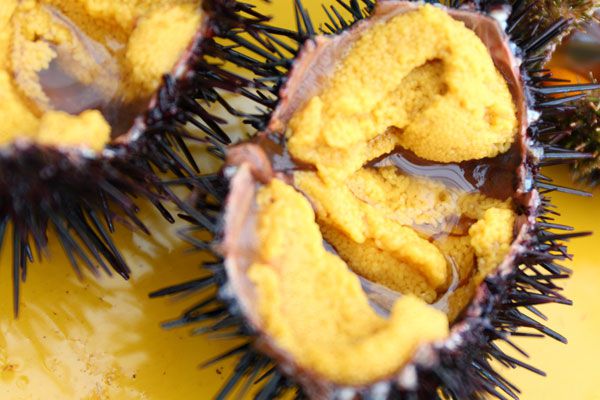
Peak Season
Sea urchins take about four and a half years to grow from infancy to full size. The harvest season runs from June to August, and the very best sea urchins are found in July, just before the spawning season starts.
Tips
The Kita-murasaki sea urchin, also known as the white sea urchin, has beautiful yellow flesh with a white tinge. Look for a large, plump body and signs of whiteness.
How to enjoy them
Freshly shucked sea urchins that have not been subject to alum processing have a delicious natural taste. To best enjoy the genuine flavor, start out with no condiments whatsoever.

